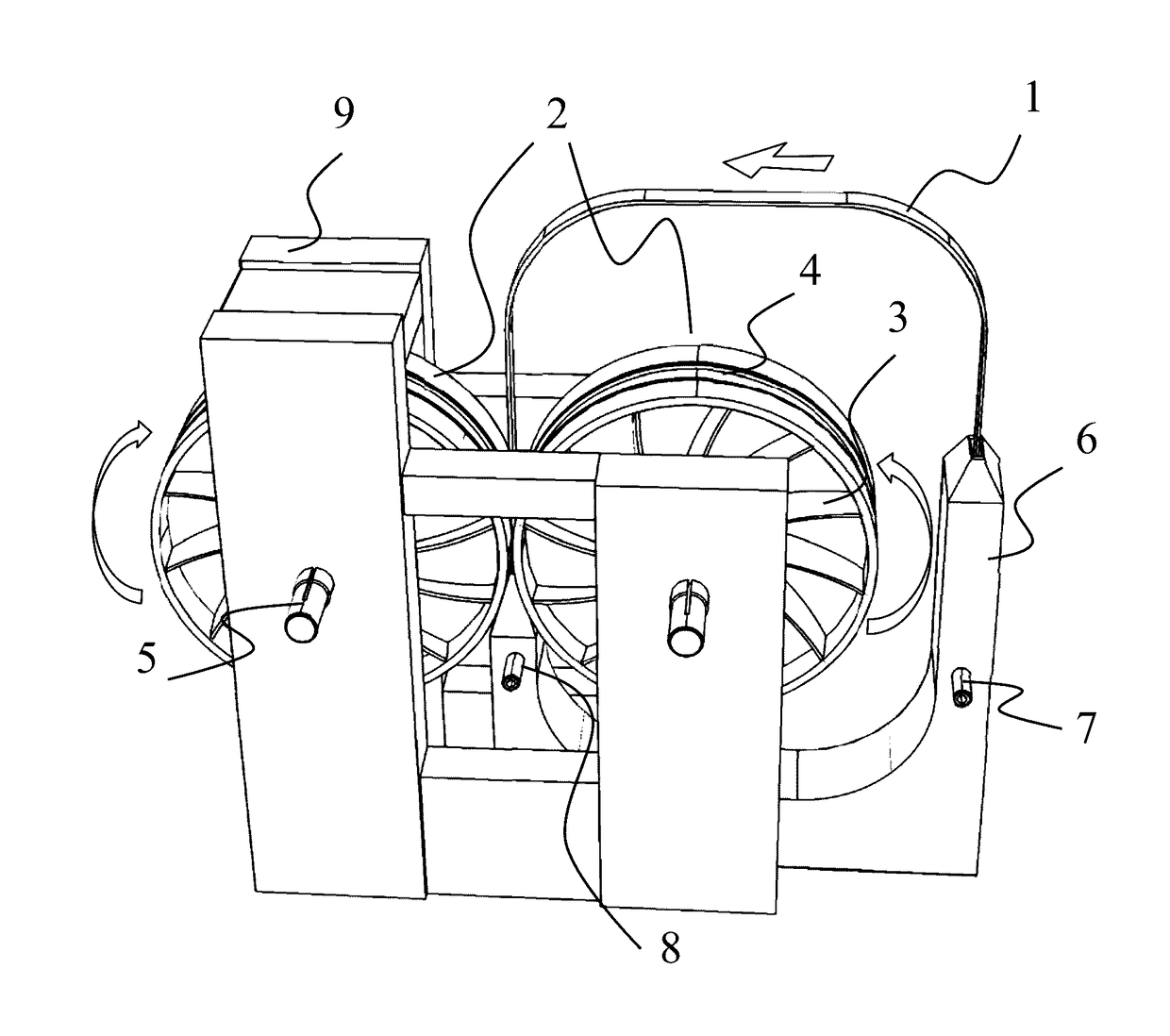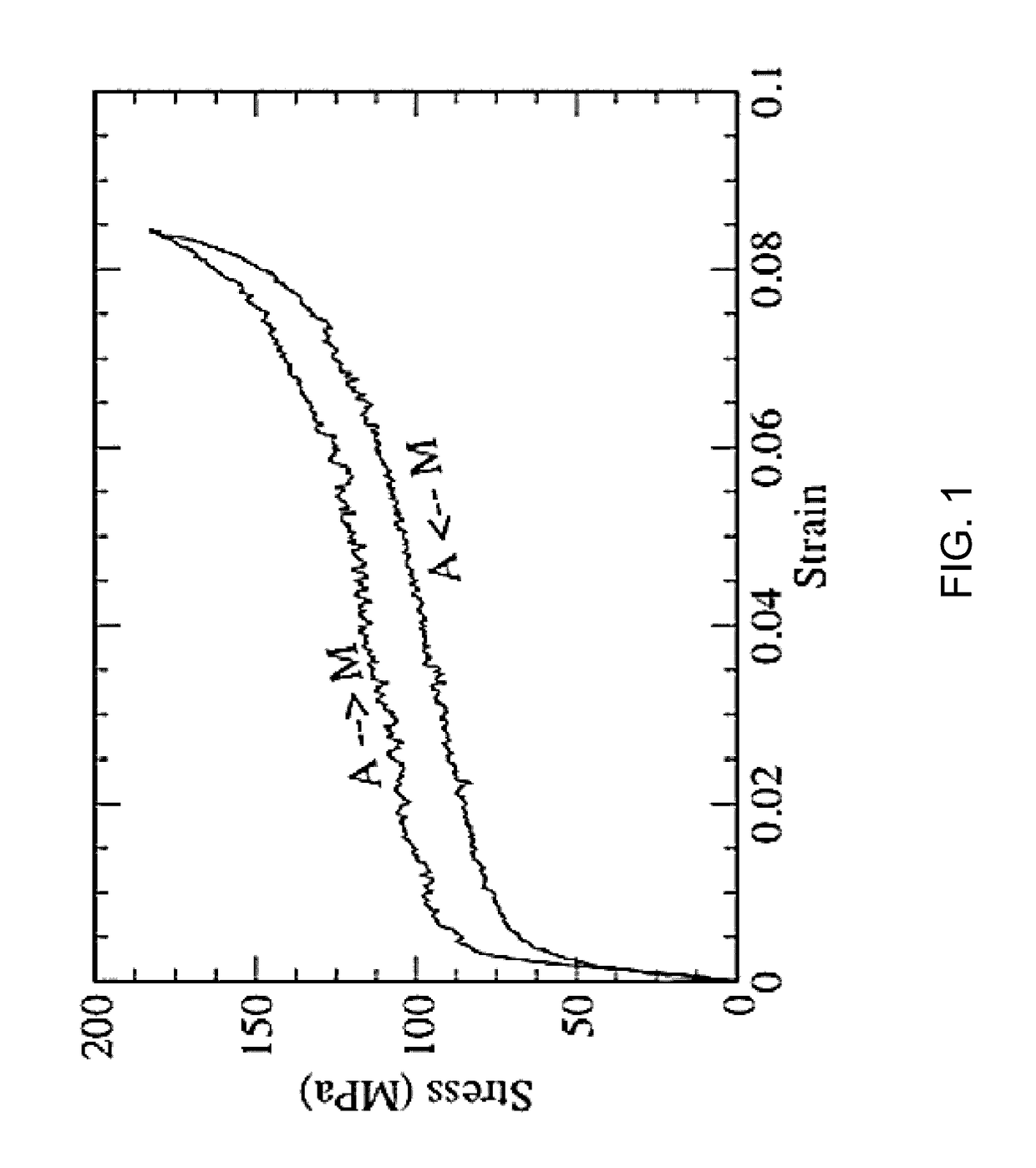Compact thermoelastic cooling system
a cooling system and thermoelastic technology, applied in the direction of indirect heat exchangers, refrigeration machines, light and heating apparatus, etc., can solve the problems of large deformation (strain), limited service life of systems constructed based on these embodiments, and unfavorable economic benefits, etc., to achieve the effect of a larger contact area
- Summary
- Abstract
- Description
- Claims
- Application Information
AI Technical Summary
Benefits of technology
Problems solved by technology
Method used
Image
Examples
Embodiment Construction
[0034]Achieving efficient heat exchange is the key challenge for commercializing the thermoelastic cooling technology because of the following constraints: 1) heat exchange coefficient between the refrigerant and the heat-exchange medium is low, 2) solid refrigerant is mechanically compressed and released periodically, and the heat exchange must be in synchronization with the periodical application of stress, 3) compressive stress is preferred over tensile and torsional stress due to fatigue life concern, 4) solid refrigerant must maintain certain geometric aspect ratio to avoid buckling under compression, 5) higher system operation frequency is preferred for higher system power density. An innovative system design that can balance the above-mentioned constraints is needed to achieve a compact, efficient, and cost-effective thermoelastic cooling system.
[0035]The present invention, in one aspect, discloses a compact thermoelastic cooling system that includes a set of rollers, a refri...
PUM
 Login to View More
Login to View More Abstract
Description
Claims
Application Information
 Login to View More
Login to View More - R&D
- Intellectual Property
- Life Sciences
- Materials
- Tech Scout
- Unparalleled Data Quality
- Higher Quality Content
- 60% Fewer Hallucinations
Browse by: Latest US Patents, China's latest patents, Technical Efficacy Thesaurus, Application Domain, Technology Topic, Popular Technical Reports.
© 2025 PatSnap. All rights reserved.Legal|Privacy policy|Modern Slavery Act Transparency Statement|Sitemap|About US| Contact US: help@patsnap.com



